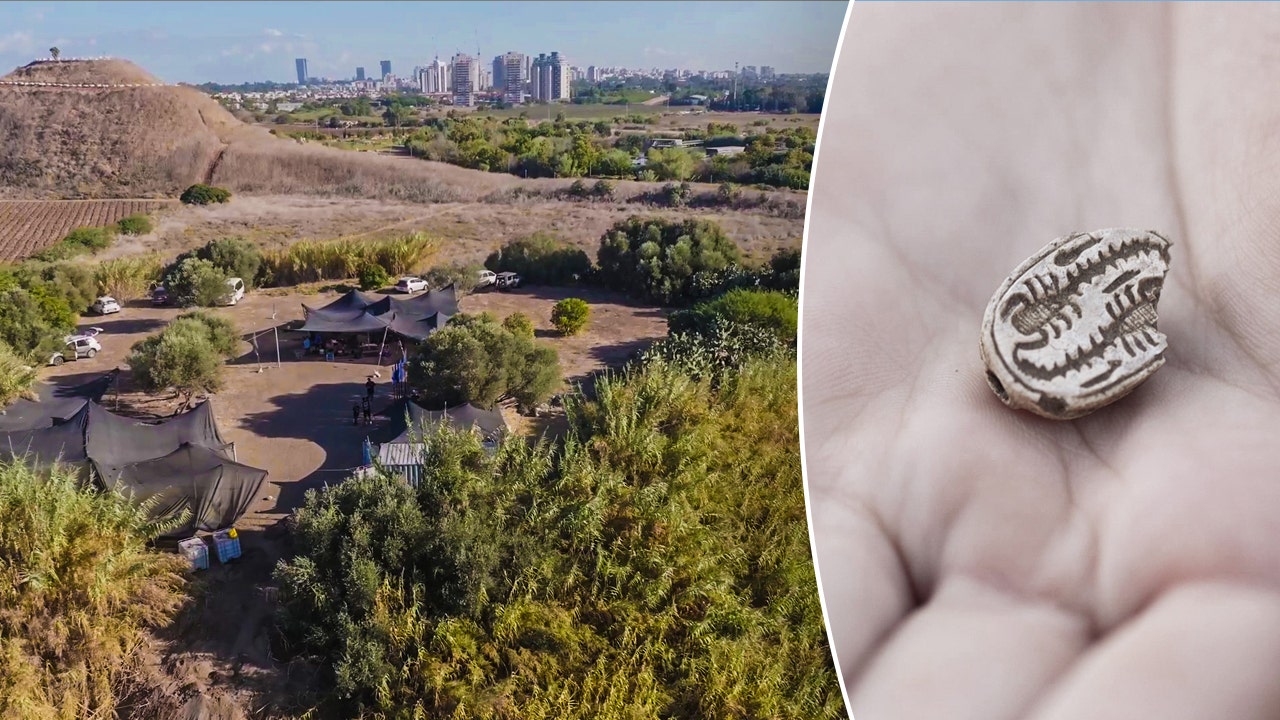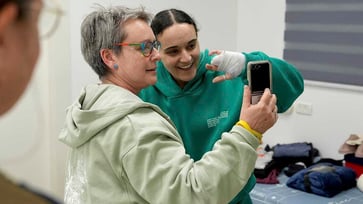An ancient Egyptian amulet is discovered by a 12-year-old girl in Israel.
During a family vacation, a 12-year-old girl stumbled upon an ancient discovery.

An ancient item dating back approximately 3,500 years was discovered during a family trip of a 12-year-old girl.
Dafna Filshteiner, a girl on a hiking trip with her family near Tel Qana in Hod Hasharon, Israel, discovered her finding, according to a press release from the Israel Antitiquities Authority.
"Filshteiner was searching for porcupine needles and smooth pebbles when he stumbled upon an interesting stone. He showed it to his mother, who dismissed it as an ordinary stone or bead. However, Filshteiner was determined to prove his mother wrong and searched online for more photos of similar stones. After finding several, he realized that the stone was something special and immediately contacted the Antiquities Authority."
An Egyptian amulet from the New Kingdom period, dating back 3,500 years, was discovered by the young girl.
According to the press release, the amulet was shaped like a dung beetle, which was considered sacred in Ancient Egypt as a symbol of new life.

Dr. Yitzhak Paz, a Bronze Age expert with the Israel Antiquities Authority, stated in a press release that the scarab, a distinct Egyptian characteristic, was found on the surface and its exact context is difficult to determine. It may have been dropped by an important figure or deliberately buried.
The beetle-shaped amulet displayed two scorpions, representing the Egyptian goddess Serket, who protected pregnant mothers. Additionally, the amulet contained the nefer symbol, meaning 'good' or 'chosen', and a royal staff-like symbol.
Filshteiner received a certificate of good citizenship for reporting the ancient find.
"The Israel Antiquities Authority has awarded Dafna a certificate of appreciation for her discovery of a scarab, which is now on display in Jerusalem at the Jay and Jeanie Schottenstein National Campus for the Archaeology of Israel. Eli Escusido, director of the Israel Antiquities Authority, stated in a press release, "We invite everyone to come and visit the scarab!""
Young finders can make impressive discoveries, as shown by Filshteiner's story, which highlights that remarkable finds do not always come from archaeological excavations.

In England, a 9-year-old boy discovered a glittering rock while on the beach.
In November 2024, the Worthing Museum announced that the rock discovered was a hand axe from the late Middle Paleolithic period, dating back between 40,000 and 60,000 years.
James Sainsbury, curator of archaeology at Worthing Museum, previously stated in an email to Planet Chronicle Digital that visitors frequently bring in flint tools and Roman artifacts, but the oldest item he has seen in 10-plus years was recently shown to him.

"Sainsbury stated that Neanderthal hand axes are rare in Sussex. This is the first one to be discovered in years, and the fact that it was found by a young local boy on the beach makes it even more special."
In 2022, a 12-year-old boy and his mother discovered a gold bracelet while walking their dog in West Sussex, England.
They brought the item to a local liaison officer and learned it was an ancient Roman piece of jewelry.
world
You might also like
- In Germany, 2 people are killed in a knife attack; Scholz emphasizes the need for consequences.
- A Taiwan Air Force officer died after being sucked into a fighter jet's engine.
- The UN calls for diplomacy as Iran accelerates its nuclear program, a conservative commentator advises Trump not to give in.
- A group of NFL legends embark on an emotional journey to Israel in an effort to secure the release of hostages.
- Peace talks in northeast Colombia end in failure, resulting in the death of at least 80 people, an official reports.



















